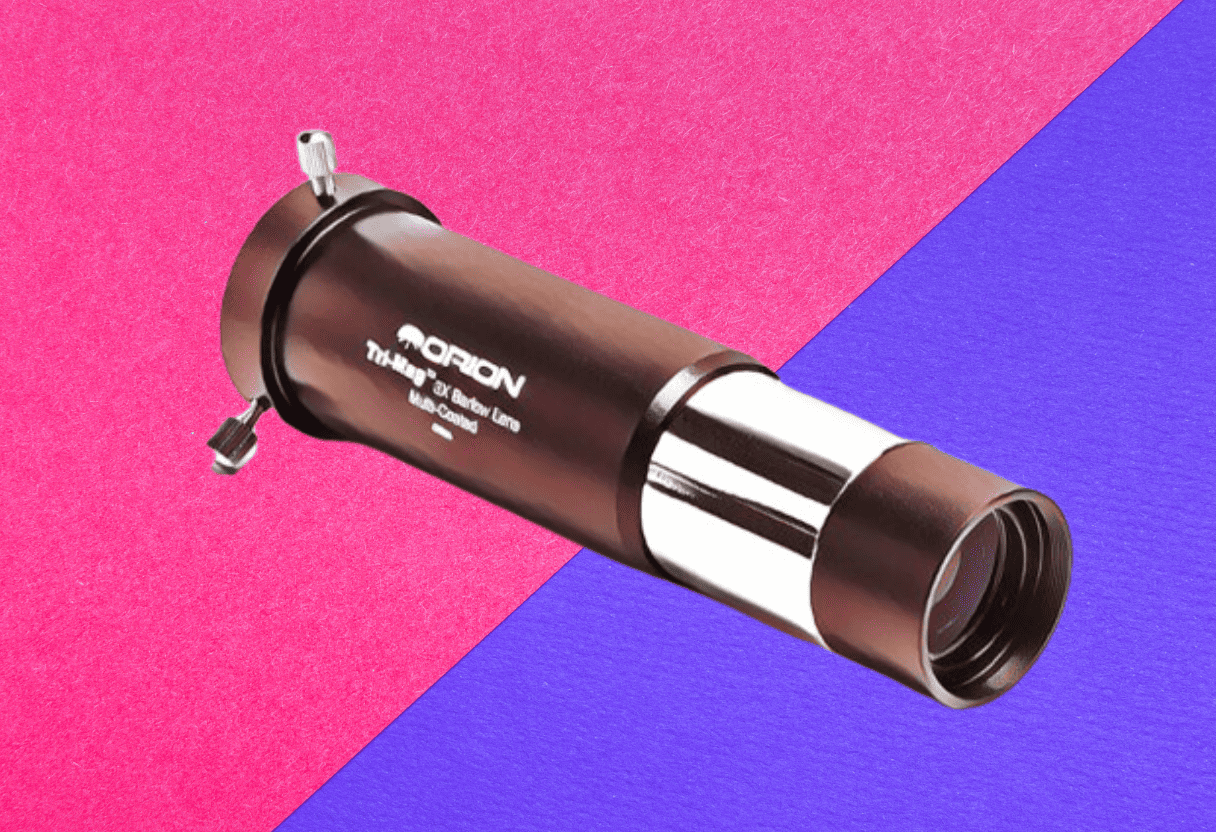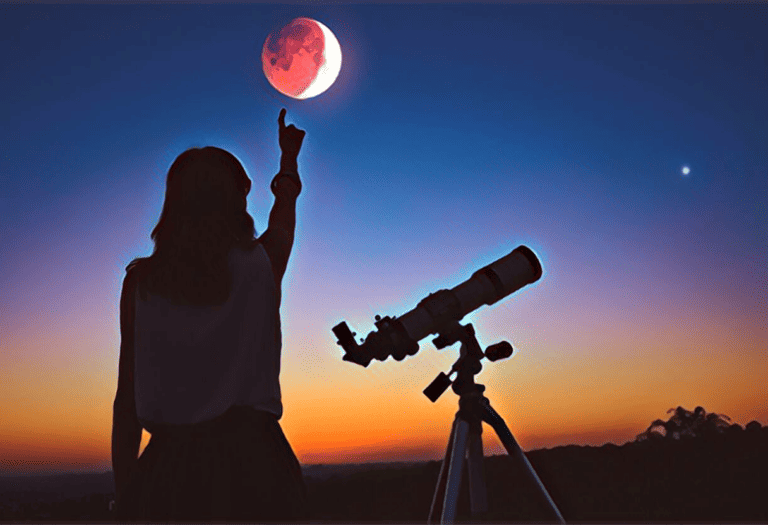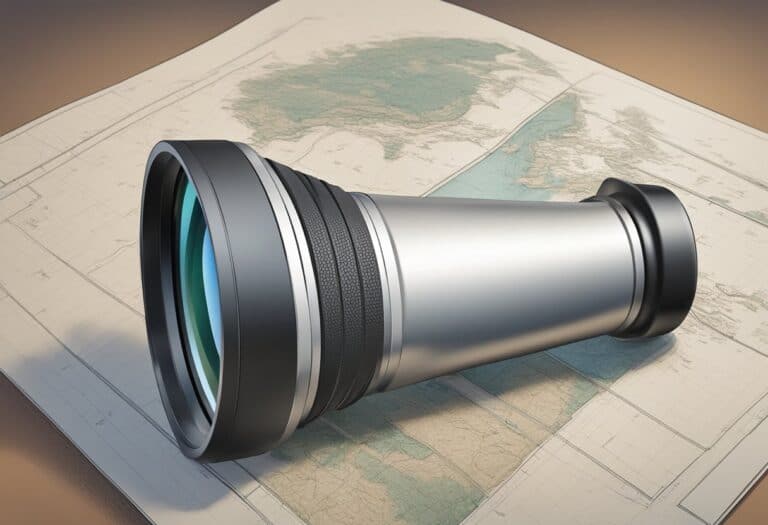Are you looking to elevate your stargazing experience with a Barlow lens?
Astronomy enthusiasts understand the transformative impact a quality Barlow lens can have on their telescope’s performance. Named after its inventor, Peter Barlow, this ingenious tool boosts the magnifying power of your telescope’s existing eyepieces, allowing for closer views of celestial wonders without the need for multiple, costly eyepieces.
Well, we’ll be going over:
- How does a Barlow lens enhance the capabilities of a telescope, and what are the key features to consider when choosing one?
- What are some of the top Barlow lenses currently on the market, and how do they compare in terms of optical quality, magnification, and build?
- For different types of telescopes and observing preferences, which Barlow lenses offer the best experience, balancing magnification, clarity, and ease of use?
Whether you’re an amateur stargazer or a seasoned skywatcher, the right Barlow lens can significantly upgrade your celestial observations.
Let’s dive in.
Top Barlow Lenses for Enhanced Celestial Viewing
- Celestron 2X Barlow – Top Pick
- Orion Shorty Barlow
- SVBONY 3X Barlow Lens
- Celestron X-Cel LX Barlow
- Astro Buddy 3X
I’ve scoured the market to find the Barlow lenses that stand out for their quality and performance. These options are chosen based on their ability to double or triple the magnification of your telescope’s eyepiece, effectively expanding your view of the cosmos. Each product has been evaluated for its optical clarity, build quality, and compatibility with different telescopes, ensuring that you get the most out of your stargazing sessions. Whether you are an amateur astronomer or a seasoned skywatcher, the following Barlow lenses will undoubtedly take your celestial observations to the next level.
Celestron 2X Barlow
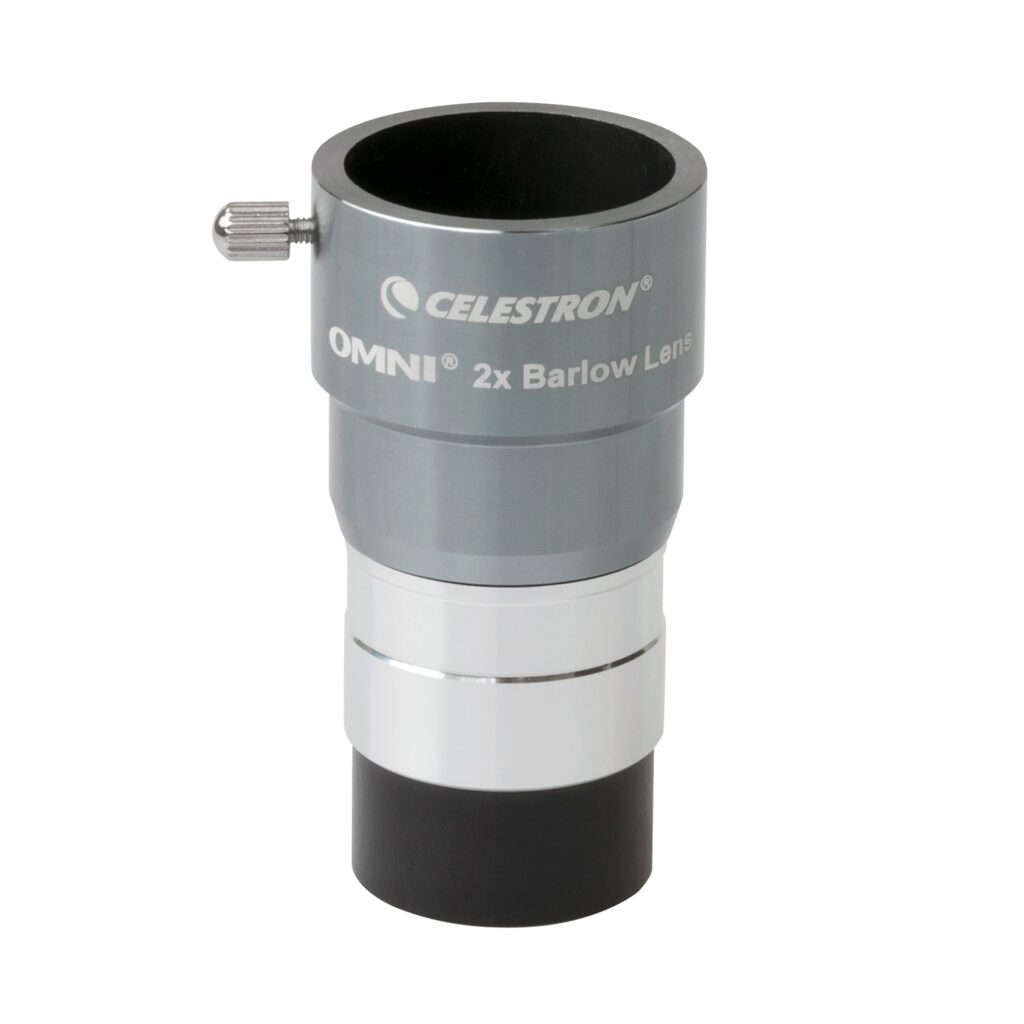
After giving the Celestron Omni 2X Barlow Lens a try, I find it to be an exceptional value for both beginners and seasoned stargazers.
Pros
Cons
When I used this Barlow lens with my go-to eyepieces, I noticed an immediate improvement in magnification. The skies were clear as I gazed upon Jupiter. The gas giant’s bands were strikingly more apparent, demonstrating how effectively the Celestron Barlow doubles visual power without sacrificing crispness.
Despite the increased magnification, my eyepieces maintained the same comfortable distance to my eye. For someone who wears glasses, I truly appreciated this feature. The multicoated lens elements succeeded in transmitting light efficiently, which was evident in the brightness and clarity of the celestial objects I observed.
Moving on, the build quality of this Barlow lens felt solid in my hands. The all-metal construction gave a reassuring sense of durability. However, I must admit the added weight was noticeable. It’s not a deal-breaker by any means, but something to consider if you prefer lighter accessories.
A slight downside, although not unexpected, was minor chromatic aberration while viewing objects with extreme brightness contrasts. Most telescopes won’t have this issue, but if you’re using an especially fast optical system, it’s something to keep in mind.
Lastly, fitting the Barlow into some of my eyepiece barrels was a bit snug. It wasn’t problematic, and with careful handling, I managed without issue. Just be gentle when inserting or removing it from your eyepieces or diagonal to avoid damage. Overall, the Celestron Omni Barlow lens has found a permanent spot in my observing kit.
Orion Shorty Barlow
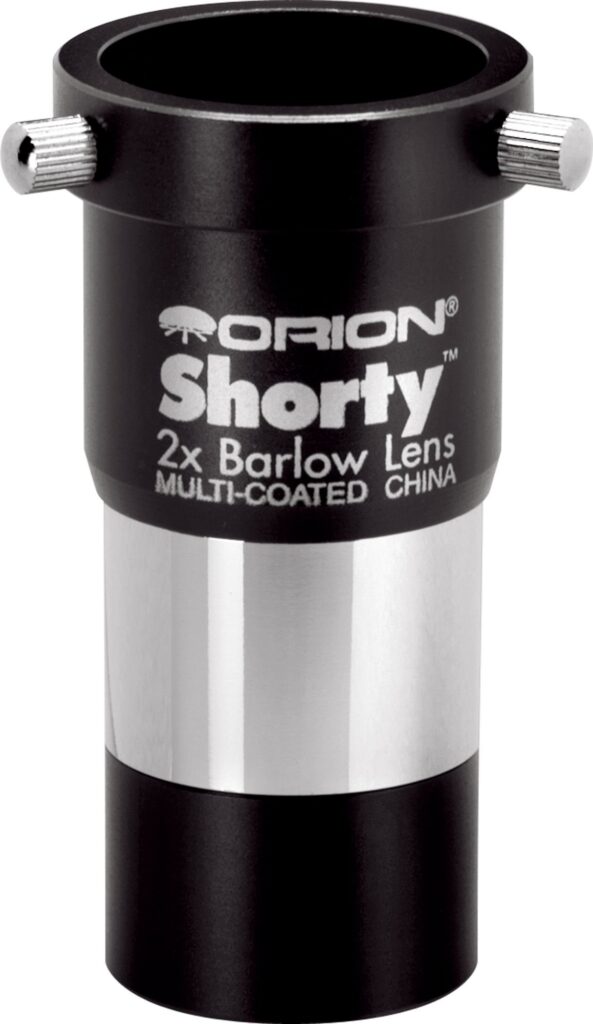
For those looking to enhance their night sky viewing without breaking the bank, the Orion Shorty Barlow doubles your eyepiece magnification, ensuring a clearer and more detailed experience.
Pros
Cons
I recently took my new Orion Shorty Barlow out for a spin under the stars. It was a thrill to double up the magnification power of my eyepieces, especially on objects like the craters of the moon and the bands of Jupiter. The lens, being multi-coated, produced crisp, high-contrast images, which significantly enriched my viewing experience.
Its compact design was perfect for my stargazing trek – it slipped into my accessory case without any hassle. This little powerhouse is a robust tool, enhancing the capabilities of my telescope without the need to invest in additional eyepieces. I found the addition of a filter thread a nice touch, offering me a chance to experiment with different filters for an even better view.
While I reveled in the closer views, it’s worth noting the inevitable trade-off between magnification and brightness. Also, when I swapped eyepieces, I had to adjust my telescope’s focus each time, which was a minor inconvenience. Plus, those with limited focus adjustment on their telescopes should be wary, as the Barlow may require more in-focus than some telescopes can provide.
In summary, the Orion Shorty Barlow is a stellar companion for any amateur astronomer eager to delve deeper into the cosmos without emptying their pockets. Its practicality and the quality of its output make it a no-brainer addition to my astronomical tool kit.
SVBONY 3X Barlow Lens
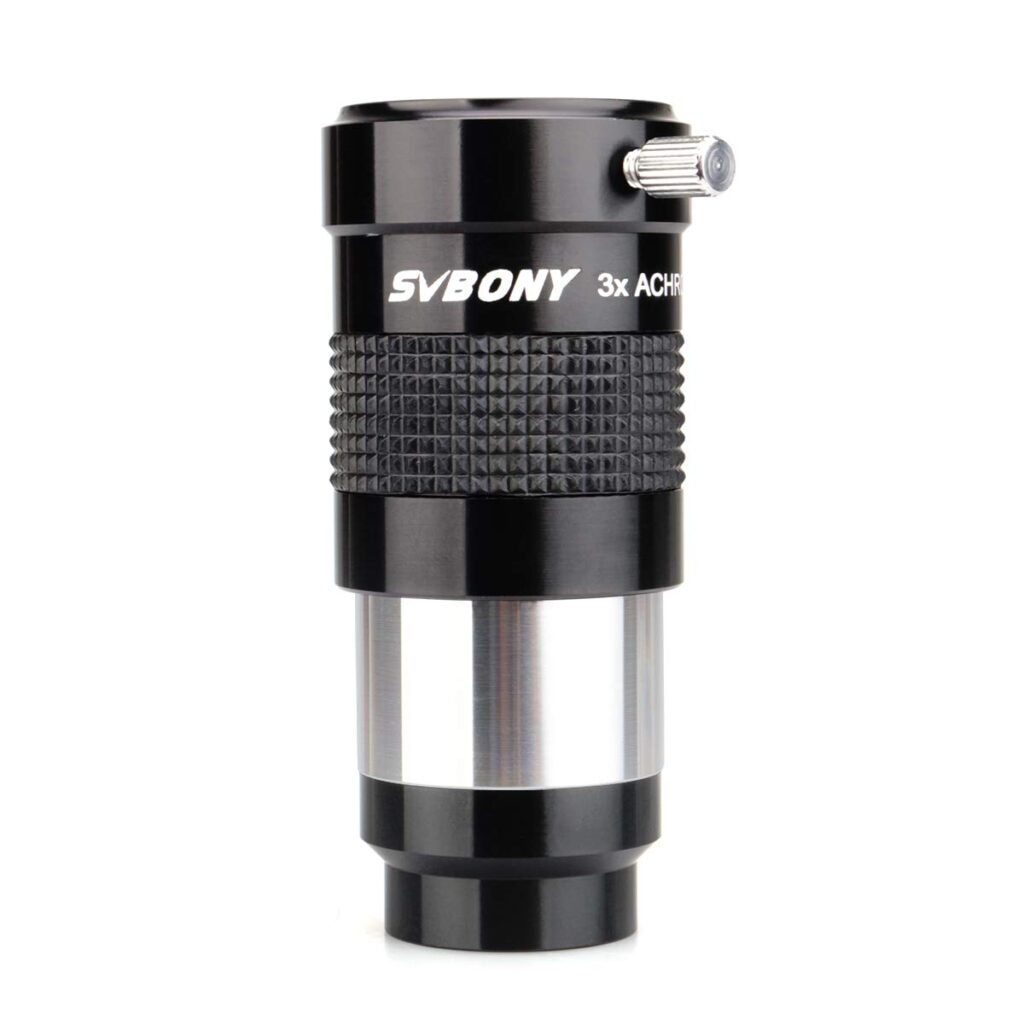
I’d recommend this Barlow lens for its clear magnification benefits, notwithstanding a few optical compromises.
Pros
Cons
After coupling my telescope with the SVBONY 3X Barlow Lens, the night sky unfolded with a new level of detail. The stellar clarity achieved when I panned across the lunar surface left a strong impression. The robust build quality immediately stood out; it handled easily and connected securely with my eyepieces. Its full metal construction suggests longevity, and keeping it pristine is effortless with the included end caps.
While in most cases the image clarity was astonishingly sharp, I did observe some fringing when experimenting with a higher-powered eyepiece. My foray into the cosmos wasn’t without this minor blemish, hinting at the Barlow’s limitations. Despite this, the chromatic distortion was minimal and hardly detracted from the overall experience.
My observation sessions with the SVBONY 3X Barlow Lens culminated in a mixed, yet predominantly positive view of its capabilities. A noticeable absence was the threaded end for filters, a feature I enjoyed on prior Barlows for enhancing specific planetary details. However, the trade-off for the price point and the image quality it delivers seems fair. This Barlow lens is a fruitful addition for amateur astronomers who want to elevate their stargazing without straining their budget.
Celestron X-Cel LX Barlow
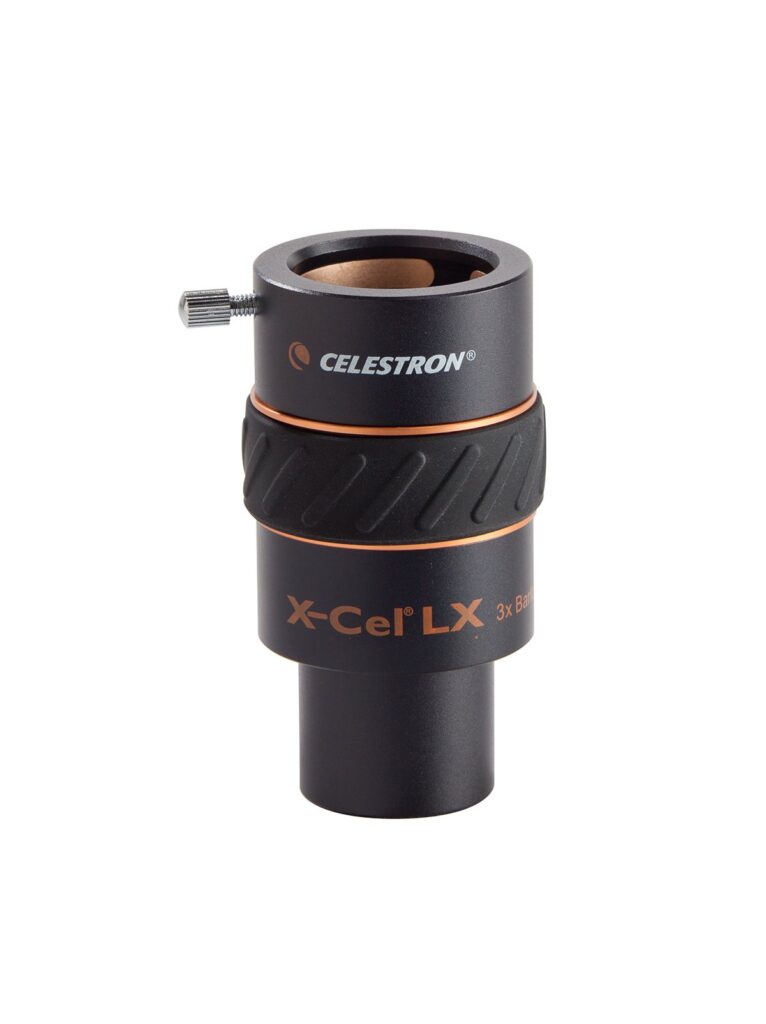
After a night spent stargazing with the Celestron X-Cel LX Barlow lens, I can confidently say it’s a game-changer for enhancing celestial observations.
Pros
Cons
I often find myself amazed at just how significantly a good Barlow lens can enhance my astronomical experiences. With the Celestron X-Cel LX Barlow lens, my planetary viewing has been taken to new heights. The ease of use is a clear advantage; I simply inserted the lens between my telescope and eyepiece, and the difference was unmistakable. The lunar surface’s craters popped into view with incredible clarity, and the bands of Jupiter seemed almost within reach.
Durability is another key attribute of this Barlow lens. Throughout the evening, as the temperature dropped, I appreciated the robust, rubberized grip which is a thoughtful addition for those cold nights under the stars. The sturdy build gave me peace of mind knowing that my investment was protected. Even with repeated eyepiece changes, the brass compression ring held everything securely in place without leaving any marks.
However, perfection is elusive, and the Celestron X-Cel LX is no exception. During moments of intense magnification, I observed a hint of chromatic aberration which, while minor, was still noticeable against the contrasting dark sky. Also, given the 3x magnification, users with telescopes that have long focal lengths might find the resulting image too magnified, which could potentially exceed the useful limit of their setup.
In summary, my time with the Celestron X-Cel LX Barlow lens has only added to my appreciation for the little details in our nighttime sky, proving itself to be a stellar addition to my astronomy toolkit.
Astro Buddy 3X
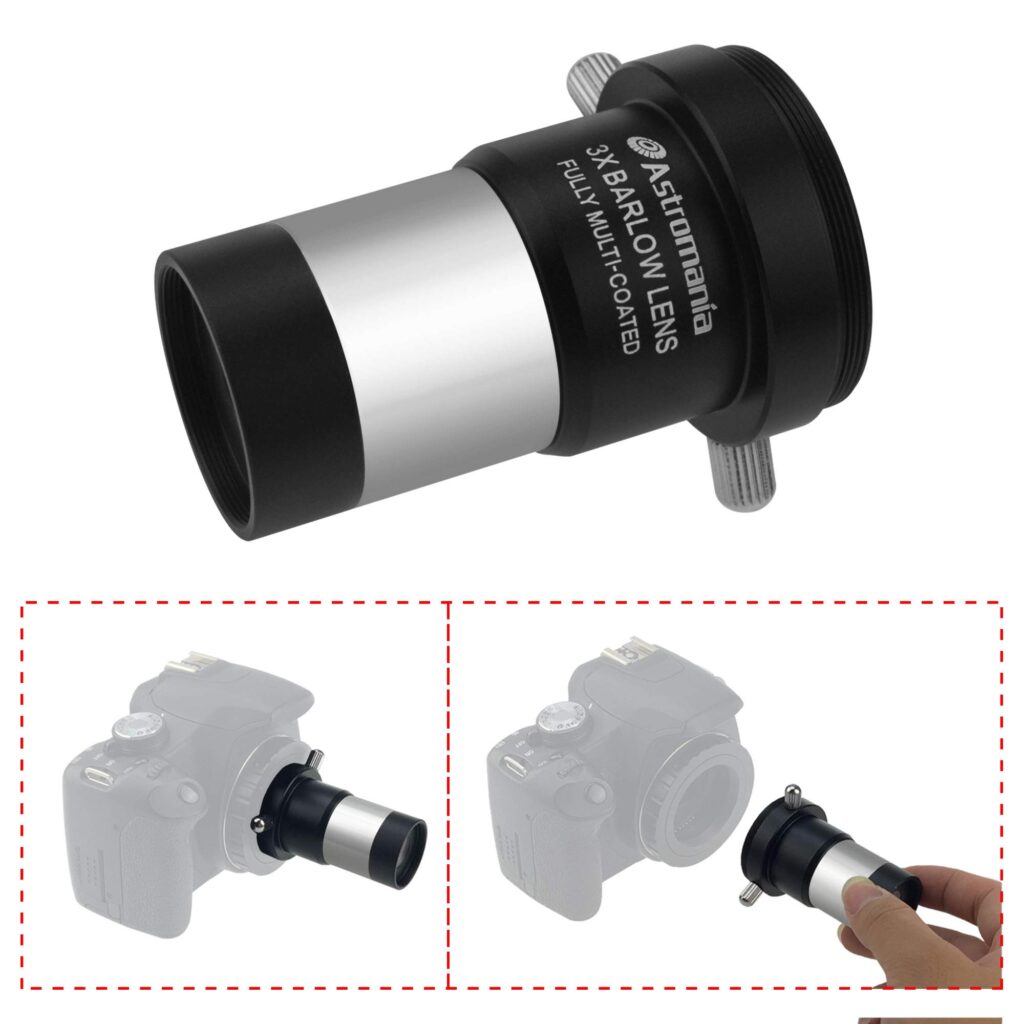
If you’re eager to enhance your stargazing, the Astro Buddy 3X offers a notable clarity boost that breathes new life into your telescope experiences.
Pros
Cons
I recently added the Astro Buddy 3X to my collection of telescope accessories, hoping to push my 1.25″ eyepiece’s capabilities further. The lens’s ability to amplify magnification while keeping the image sharp allowed me to observe the moon’s craters and the vibrant bands of Jupiter with renewed enthusiasm. Its sturdy build gave me confidence that it would endure many nights of handling and adjustment.
Connecting the Astro Buddy 3X to my DSLR was straightforward, and it enabled me to capture celestial images that were rich in detail. This level of versatility makes it a good fit for astrophotographers looking to expand their telescope’s prowess. It was particularly satisfying to see the Orion Nebula in greater definition, with the colors remaining true to what I’d expect from a more expensive piece of kit.
While the Astro Buddy 3X performed well in my nighttime sky explorations, I did notice that with certain telescope setups, there was a hint of vignetting. It wasn’t a dealbreaker, but it’s something to be mindful of when pairing the lens with different eyepieces. Additionally, with the higher magnification, I had to ensure my telescope was on a sturdy mount to avoid any shake, which becomes more apparent at higher magnifications.
Given its solid performance and clear results, the Astro Buddy 3X is a valuable tool for any astronomy enthusiast looking to get more power out of their existing telescope.
Buying Guide
Understanding Magnification
When selecting a Barlow lens, I consider the magnification it provides. A standard 2x Barlow lens will double the magnification of any eyepiece I use with my telescope. However, there are lenses that provide 1.5x, 3x, or even greater magnification. It’s crucial to balance magnification with clarity and brightness.
Quality of Optics
The quality of optics is paramount. A good Barlow lens should have high-quality glass and fully multi-coated optics to ensure minimal light loss and reflections. This ensures the images I view through my telescope are bright and sharp.
Barrel Size
Barlow lenses come in two common barrel sizes: 1.25 inches and 2 inches. I choose the size based on the eyepiece I plan to use it with. Most amateur telescopes use the 1.25-inch size, but the 2-inch lenses can be preferable for wide-field views.
Compatibility
I always check the compatibility of the Barlow lens with my existing eyepieces. It should easily fit into my telescope’s eyepiece holder, and ideally, it should work with multiple eyepieces in my collection.
Focal Length
Remember, the focal length of my telescope affects the performance of a Barlow lens. The table below shows a simplified relationship:
| Telescope Focal Length | Optimal Barlow Type |
|---|---|
| Short (< 500mm) | Lower Magnification |
| Medium (500-1000mm) | Versatile, Any Type |
| Long (> 1000mm) | Higher Magnification |
Additional Features
I consider any additional features like compression rings, which hold eyepieces securely, or threaded mounts for filters, which can enhance astronomical observations. It’s these little details that can significantly enhance my stargazing experience.
Frequently Asked Questions
In this section, I’ll cover the most common inquiries regarding Barlow lenses, focusing on choosing the right lens, their magnification effects, compatibility, and specific use cases in astrophotography and planetary imaging.
What factors should one consider when choosing a Barlow lens for beginners in astronomy?
When selecting a Barlow lens as a beginner, I consider its build quality, magnification power, and the type of telescope it will be used with. The ease of use and the ability to change eyepieces without refocusing can also be important factors for newcomers.
How do different magnifications of Barlow lenses, like 2x and 3x, affect the viewing experience?
A 2x Barlow lens doubles the magnification of any eyepiece, resulting in closer views of celestial objects, but a darker field of view. A 3x Barlow, on the other hand, triples the magnification, providing even more detail but at the expense of brightness and field size.
Can a Barlow lens be universally fitted to all telescopes, and are there compatibility issues to be aware of?
A Barlow lens cannot be universally fitted to all telescopes. It’s crucial to match the Barlow lens barrel size, usually 1.25 or 2 inches, with the telescope’s eyepiece holder. There may be additional compatibility concerns with very fast optics or very long focal length eyepieces.
What are the pros and cons of incorporating a Barlow lens into your astrophotography setup?
The main advantage of using a Barlow lens in astrophotography is the increased magnification, which allows for more detailed images. However, the increased magnification also amplifies any tracking errors and can introduce chromatic aberration, which might require more sophisticated setups to correct.
Which Barlow lenses are recommended for enhancing planetary imaging through telescopes?
For planetary imaging, widely recommended Barlow lenses are those with high-quality optics that minimize chromatic aberration. Well-regarded examples include the Tele Vue Powermate series and the Celestron X-Cel LX.
Are there particular disadvantages to using a Barlow lens with a refractor telescope?
Using a Barlow lens with a refractor telescope can introduce some drawbacks, including a potential reduction in image brightness and contrast. Additionally, if the refractor has a shorter focal length, the Barlow lens could exacerbate chromatic aberration.

